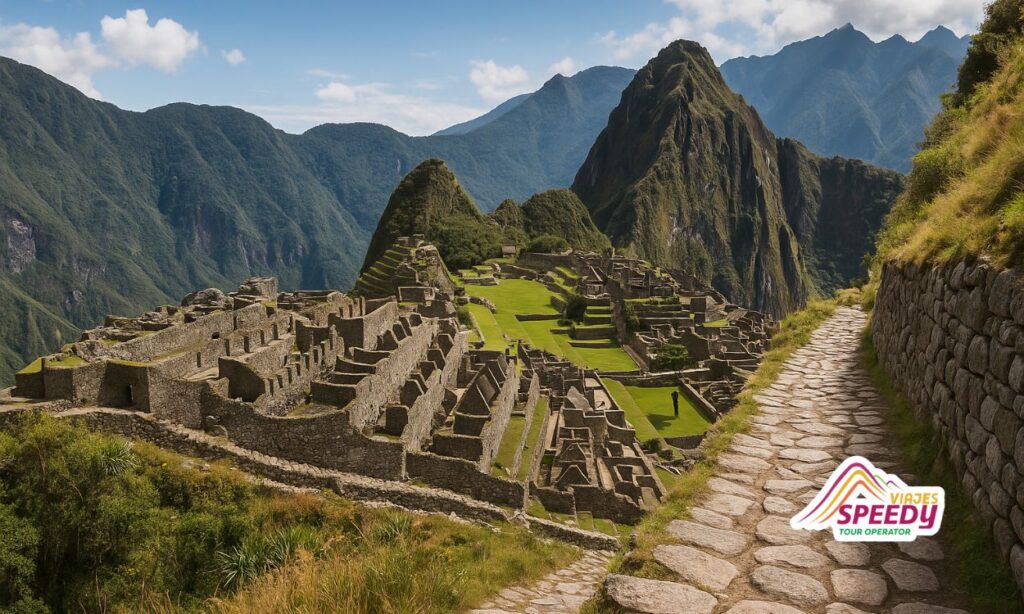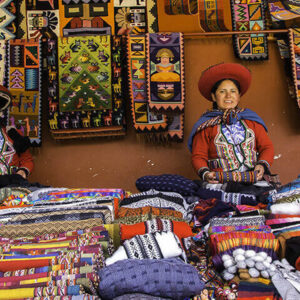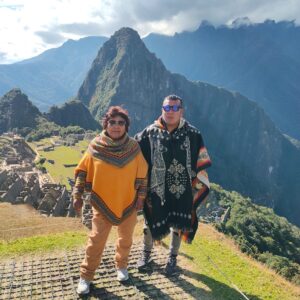The Inca Trail, known as Qhapaq ñan in the native Quechua language, was a vast and sophisticated network of ancient roads used by the Inca civilization. But what was the Inca Trail truly, beyond the tourist trek to Machu Picchu? In essence, it was the lifeblood of the Inca Empire, a complex transportation network stretching over 40,000 kilometers across Peru, Ecuador, Bolivia, Argentina, Chile, and Colombia.
The Origins of the Inca Trail
To understand what the Inca Trail was, we must look at the rise of the Inca Empire in the 13th century. Emerging from the Sacred Valley near present-day Cusco, the Incas built an empire that demanded connection across vast terrains. The Inca Trail was engineered to overcome geographical extremes: steep Andean mountains, arid deserts, and dense jungles.
This remarkable infrastructure allowed efficient communication, military movement, resource transport, and cultural cohesion. It was, above all, a symbol of imperial power and ingenuity.
What Is the Inca Trail to Machu Picchu?
When people ask, “What is the Inca Trail?”, they often refer specifically to the 43-kilometer route leading to the lost city of Machu Picchu. This portion is just a small fraction of the entire network but is arguably the most iconic. This route starts near Ollantaytambo in the Sacred Valley and passes through important archaeological sites like Runcuracay, Sayacmarca, and Wiñay Wayna before culminating at the Sun Gate (Inti Punku) overlooking Machu Picchu.
Inca Trail History and Purpose
The primary purpose of the Inca Trail was functional: it served as the backbone of the Inca Empire’s communication and logistics system. Chasquis, or Inca messengers, would run along the trail carrying messages, goods, and even fresh fish to the capital in Cusco within hours. Relay stations, called tambos, were placed every 20 kilometers or so to provide rest and resupply points.
The trail also had ceremonial significance. Certain segments were designed for pilgrims and nobles making spiritual journeys. The trail leading to Machu Picchu, for example, is believed to have been a sacred route reserved for religious and elite purposes.
Key Inca Trail Facts
- Length of the full Inca road system: Over 40,000 kilometers
- Main route to Machu Picchu: 43 kilometers
- Constructed by: The Inca Empire during the 13th to 16th centuries
- Elevation range: 2,400 m (7,874 ft) to 4,215 m (13,828 ft)
- Notable sites: Patallacta, Dead Woman’s Pass, Wiñay Wayna, Inti Punku
Inca Trail Significance in the Empire
Why was the Inca Trail built? The answer lies in the need for cohesion and control. The Inca Empire, or Tawantinsuyu, spanned vast and varied landscapes. The trail system united this territory, enabling the Sapa Inca (emperor) to administer and consolidate power over distant provinces.
This infrastructure allowed goods, messages, and armies to move quickly. It facilitated cultural exchange and helped maintain a strong, centralized state. The trail was not just a road; it was a symbol of unity and order.
Cultural Importance of the Inca Trail
The Inca Trail’s cultural legacy is immense. Beyond its functional role, it represents the ingenuity, discipline, and spiritual depth of the Inca civilization. The trail passed through religious centers, agricultural terraces, and administrative hubs, reflecting the interconnected nature of life in the empire.
Today, walking the Inca Trail to Machu Picchu is more than a trek. It’s a way to honor a civilization that valued balance between man and nature, engineering and spirituality.
Sacred Valley and the Inca Trail Connection
The Sacred Valley was the heart of the Inca civilization. Many ancient Inca roads began or passed through this fertile region. The Inca Trail to Machu Picchu is one of many routes that highlight the valley’s historical importance.
Ollantaytambo, a town in the Sacred Valley, was a key administrative and ceremonial center. Its layout and remaining structures demonstrate the road network’s reach and strategic function.
The Inca Empire Transportation Network
The Inca Empire transportation network was the most advanced in pre-Columbian America. Llamas were the main cargo animals, and suspension bridges made from woven grass spanned rivers and gorges. Stone staircases and drainage systems ensured the trail’s durability and functionality.
These ancient Inca roads still influence modern infrastructure and continue to serve remote Andean communities.
Why the Inca Trail Endures
Despite the Spanish conquest, parts of the Inca Trail remain intact. The trail to Machu Picchu, in particular, survived in part because the city was never discovered by the Spanish, preserving its path in near-original condition.
Today, the Inca Trail is a UNESCO World Heritage Site and one of the most popular trekking routes in the world. Its preservation is vital to understanding the past and appreciating the engineering marvels of the Inca civilization.
Inca Trail Historical Route: More Than Just a Hike
Walking the Inca Trail is a journey into the soul of ancient Peru. Each step reveals Inca Trail facts, stories of cultural endurance, and the legacy of a civilization that once thrived in harmony with nature.
Whether you’re a history lover, adventurer, or spiritual seeker, understanding what the Inca Trail was will enrich your journey.
Ready to follow the footsteps of the Inca?
Start your adventure along the legendary Inca Trail to Machu Picchu with trusted local experts.













